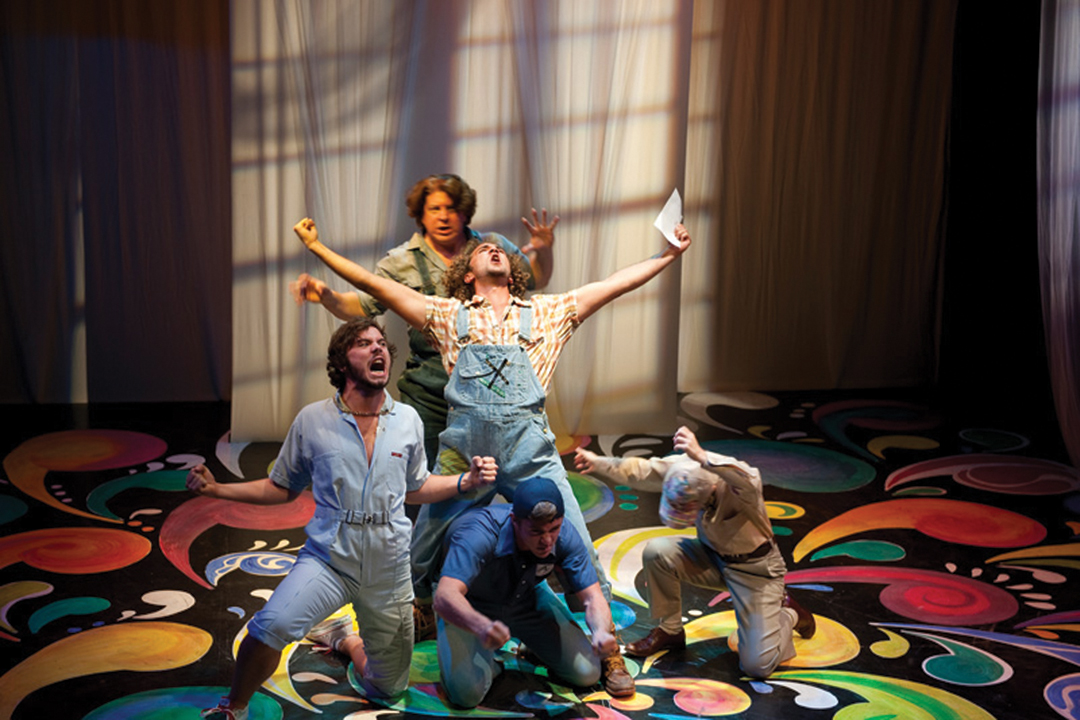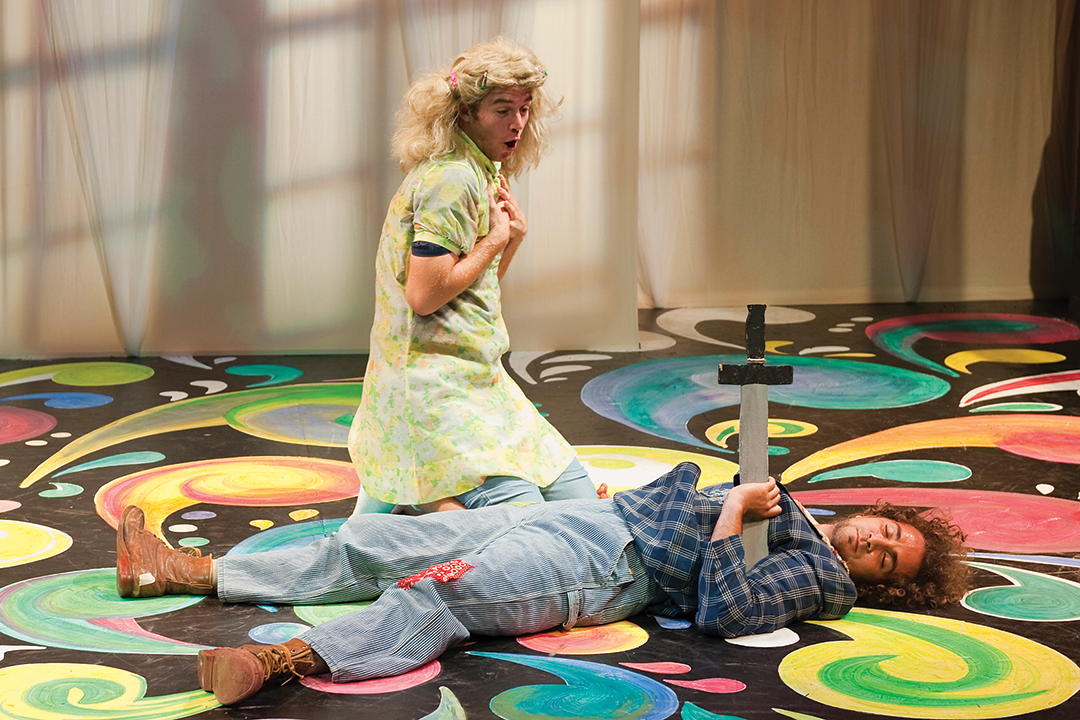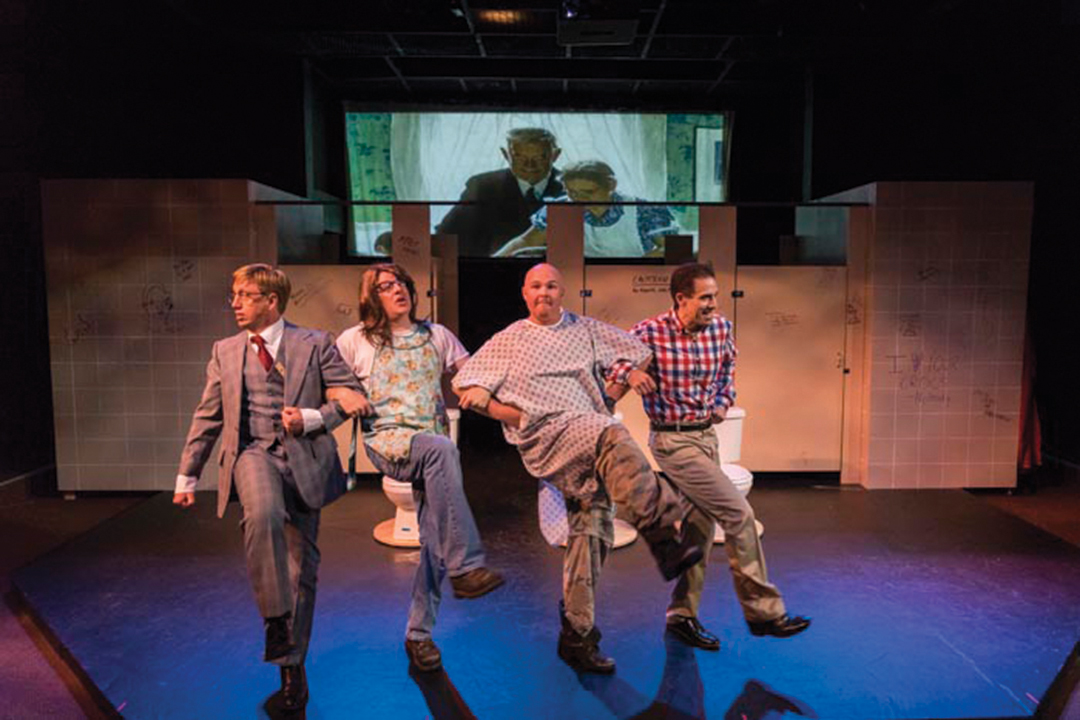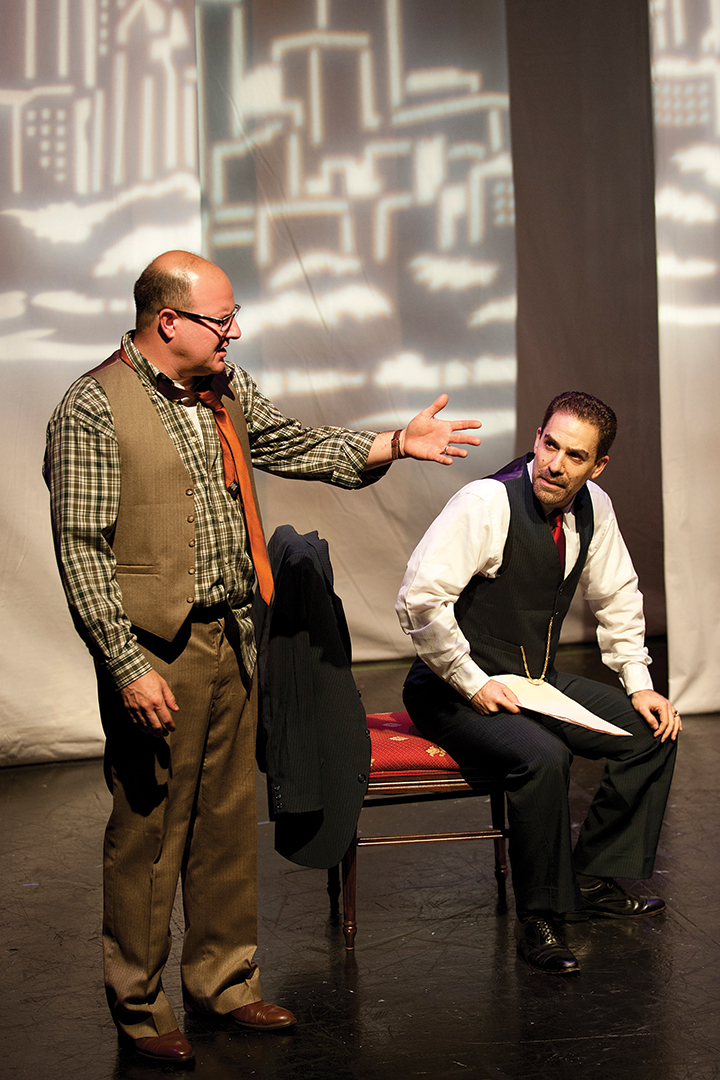Growing up, Seth Panitch thought he would be a doctor like his father. He dreamed of going to medical school and was familiar with the apprenticeship-like process of residency that allows young professionals to apply their academic training in the real world. But when Panitch, now the director of UA’s acting programs, pursued theatre instead of medicine, he was on his own. Despite the classical training he received at the University of Washington, the professional theatre world was uncharted territory for Panitch. Two years went by before he made his big break in New York.
“After graduate school, most theatre students are sort of dumped out into the world,” Panitch said. “In some respects actors pop out of the womb too early, and what they need is a bridge to connect them professionally and get them on their feet. I didn’t have that.”
Learning from his own experience and wanting to provide better opportunities for his students at UA, Panitch created the Bridge Project in 2006. The premise of the project is to give students the opportunity to be in a professional production with professional actors in a big city, so they can learn the ropes and make the connections they need to be successful after graduation.
In the 10 years that the program has been operating, Panitch has already seen dozens of students succeed. Some have gone on to perform in Broadway and off-Broadway hits like Hamilton, Kinky Boots, and Wicked; others have made their names in television and film. The common thread, however, is that they all participated in the Bridge Project.
“All of our successful students have participated in this program,” Panitch said. “And though it’s not the only reason they are successful, it is certainly a part of their success because actors need to be seen in New York. They need to connect with other actors, directors, reviewers, and playwrights—and this project makes that possible.”
Panitch’s concern for others, however, extends beyond his current acting students. The Bridge Project invites students from across the Department of Theatre and Dance to receive opportunities to put their training to the test. For each production, Panitch brings a team of UA costume, set, and lighting designers—and he invites alumni to participate as well.
“We don’t forget about our students once they graduate,” Panitch said. “No other program does that. No other program allows alumni to take advantage of these opportunities. We do because we want to help those who have been in the industry for a few years get the extra push they need to get their careers going.”
Alumnus Matt Lewis, who played in two Bridge Project premieres after graduating in 2012, has gone on to play in network television shows like Fox’s Sleepy Hollow and ABC’s Resurrection. Currently, he also plays in roughly five shows a season in many of Atlanta’s respected theatres.
“It is unquestionable that my professional opportunities arose because of the skill set I acquired studying under Professor Panitch and performing in Bridge Project productions,” Lewis said. “The fact that UA is willing and able to support something like the Bridge Project is astoundingly rare. Most universities don’t—or can’t—provide the amount of financial and professional resources required. All involved in the continued support of the Bridge Project should be applauded.”
Panitch says that it takes an army to make a program like this work, and he attributes so much of the program’s success to the support that the University has given the arts. The Bridge Project received its initial funding from UA’s Research Advisory Committee and the College of Arts and Sciences Leadership Board. Additionally, Service to Man, the only Bridge Project film which won best film at the American Black Film Festival this year, was made possible because of support from the president’s office, the provost’s office, the College of Arts and Sciences, the Department of Theatre and Dance, and many other organizations across campus.
“My film was the only University-supported film at the American Black Film Festival,” Panitch said. “It’s unheard of, but it happens because this University has an artistic vision that other schools don’t.”
Panitch, who has written six of the 11 Bridge Project productions, isn’t stopping either. He plans to bring another Bridge Project production, Separate and Equal, to the stage in 2018. That show, he hopes, will run for an entire month in New York.
“We want our graduate students to put Alabama’s name out in the lights on Broadway or Hollywood or wherever else our graduates go,” Panitch said, “so we’ll keep going and growing.”






From Bridge Project to Broadway
The UA Bridge Project leads its students to success. Below are just a few alumni who have made it big.
Within a year of performing in Panitch’s Alcestis Ascending, Nick Burroughs was recruited as the understudy for Tony Award-winning Billy Porter in Broadway’s Kinky Boots. He also starred as Judas in Jesus Christ Superstar at Birmingham’s Virginia Samford Theatre and won the Broadway World Award for best local actor in a musical.
Jake Boyd was back in Alabama this summer, playing Fiyero in the Birmingham production of Wicked for the national tour. Before that he debuted on Broadway in Rock of Ages and also performed in The Sound of Music Live! with Carrie Underwood—among other productions. His kick start, however, came through his appearance in the Bridge Project production of A Midsummer Night’s Dream.
Since her time in Panitch’s Hell: Paradise Found, Alexandra Ficken has played in TV series like The Vampire Diaries spin-off, The Originals, and the HBO series Vice Principals. She has also worked in multiple regional theatres like Georgia’s Alliance and Horizon theatres.
Matt Lewis, who performed in two of Panitch’s creations for the Bridge Project—Hell: Paradise Found and Here I Sit, Brokenhearted—now has a steady professional life in Atlanta’s well-regarded theatres. He has also performed regularly in the Texas Shakespeare Festival.
Thaddeus Fitzpatrick has taken his theatrical skills across the Northeast, performing in Philadelphia, New York, and Washington D.C. His first show in New York, however, was Panitch’s Alcestis Ascending.
Michael Luwoye didn’t just make it to Broadway; he’s playing the lead role in Hamilton—the new musical sensation that The New York Times says “is on track to become one of the biggest critical and commercial hits in Broadway history.” Prior to making it big, however, he first played in the Bridge Project production Beyond Therapy.